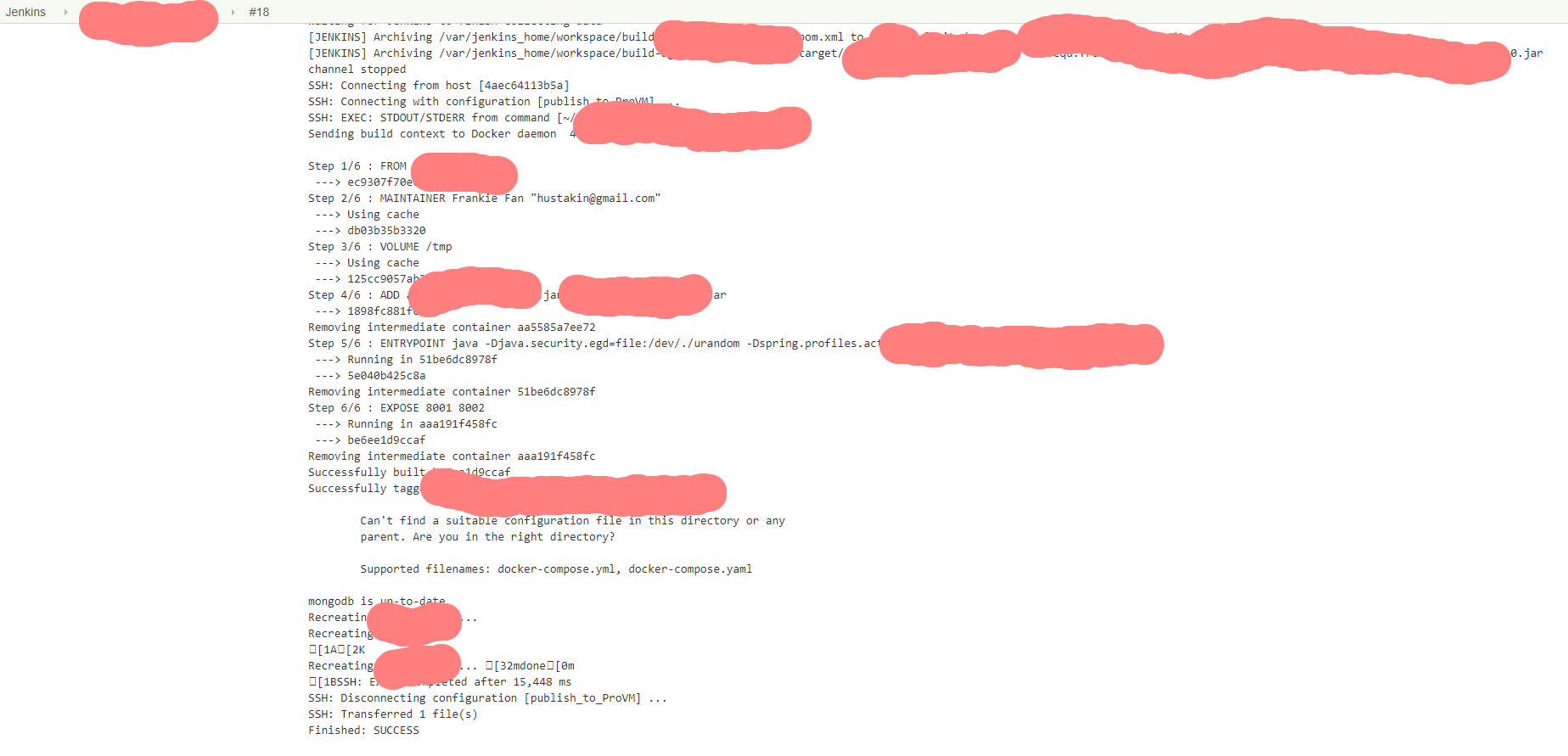Continuous Integration with Jenkins and Docker
As Jenkins is one of the most popular CI tools on the market with over a thousand plugins, in this article, we are going to set up a CI pipeline for a SpringBoot application.
Install
Install docker
Start the docker service and login the docker hub.
sudo curl -sSL https://get.docker.com/ | sh
sudo service docker start
sudo docker login
Install docker-compose
sudo -i
curl -L https://github.com/docker/compose/releases/download/1.16.0-rc2/docker-compose-`uname -s`-`uname -m` > /usr/local/bin/docker-compose
chmod +x /usr/local/bin/docker-compose
Create jenkins container
Start Jenkins container and configure the user.
sudo docker run --name jenkins -p 8080:8080 -p 50000:50000 -v /var/jenkins_home jenkins
Deploy SSH key
Use nsenter to attach the Jenkins container, and run commands in Jenkins container to generate ssh key, then the Jenkins server will have .ssh folder generated under ~, under the .ssh folder there are id_rsa (private key) and id_rsa.pub (public key).
Copy the content in id_rsa.pub, and go back to the remote server on which jenkins will SSH and execute shell scripts and deploy the application, and paste the content in ~/authorized_keys.
sudo docker run -v /usr/local/bin:/target jpetazzo/nsenter
PID=$(sudo docker inspect --format {{.State.Pid}} jenkins)
sudo nsenter --target $PID --mount --uts --ipc --net --pid
ssh-keygen -t rsa
#Copy key
Restart the SSH service
Restart the ssh service in remote server, and create a folder to put scripts into it and modify the permission of it. For example: ~/agriculture-platform.
service sshd restart
sudo mkdir ~/agriculture-platform/
sudo chmod 777 ~/agriculture-platform/
Jenkins configuration
Publish over SSH plugin
Install the plugin "Publish over SSH" in Jenkins, and configure it, then test the connection.
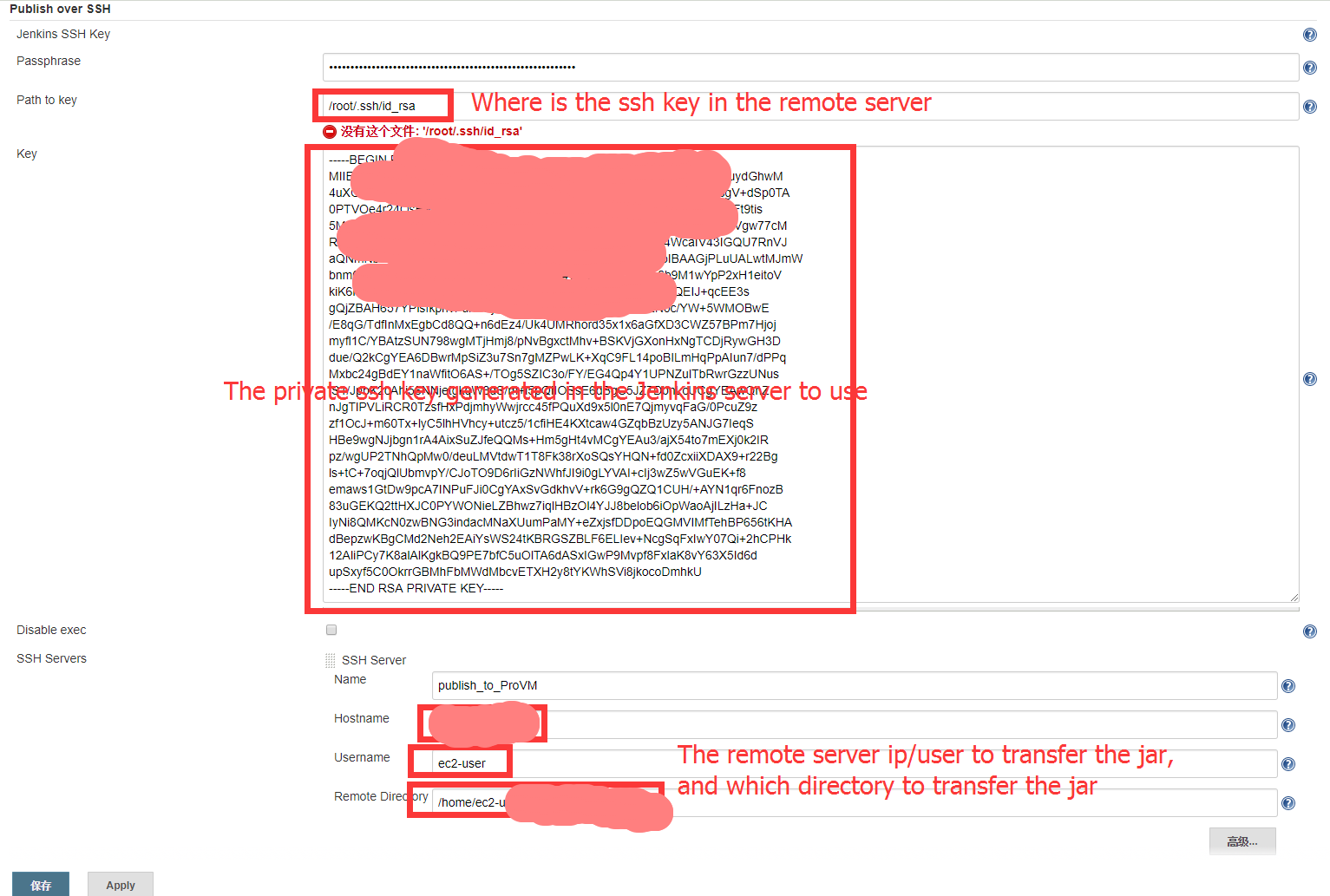
Generate API token
Login your jenkins with admin user and click the user on the right hand side, then select configure and generate a token here.

Create maven project
Create a maven project in Jenkins, configure the git URL and credentials for it.
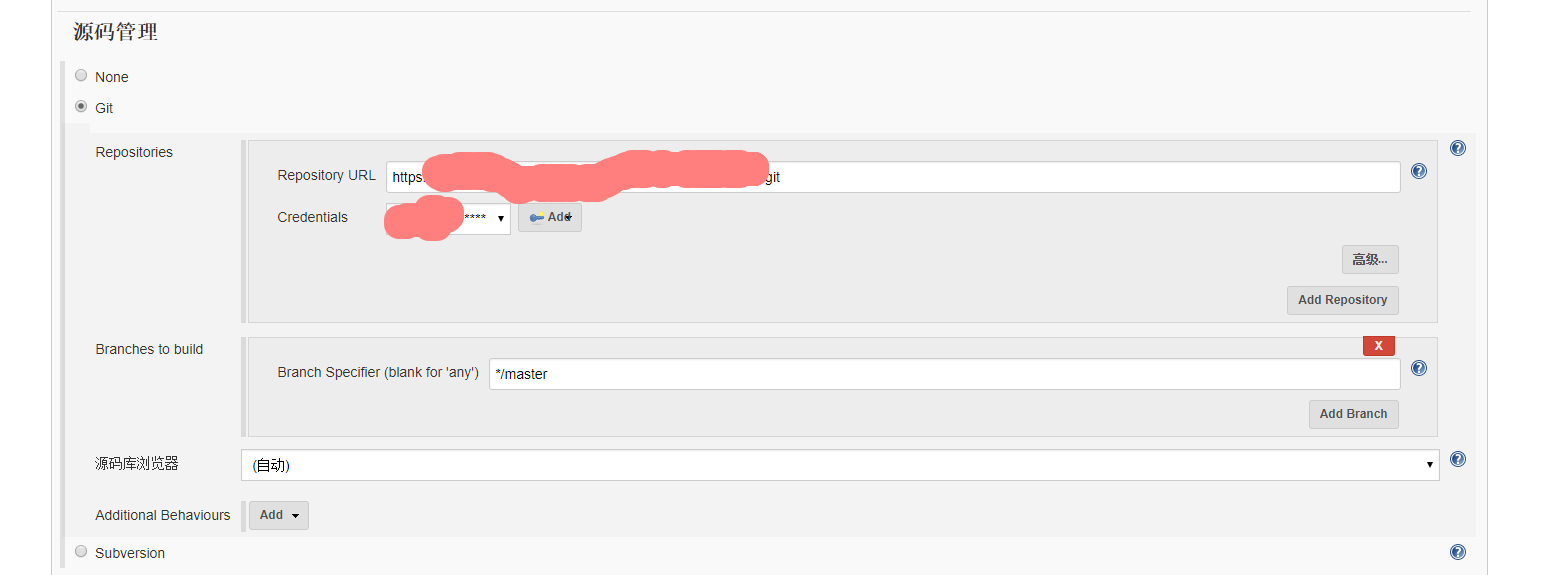
Enable build trigger
Enable the remote build trigger token which is the above generated API token.

Build maven commands
Configure the build step with maven build commands.

After build steps
Configure the after build step to SSH and copy the jar file to the remote server. Here we execute a shell script to deploy the SpringBoot application.
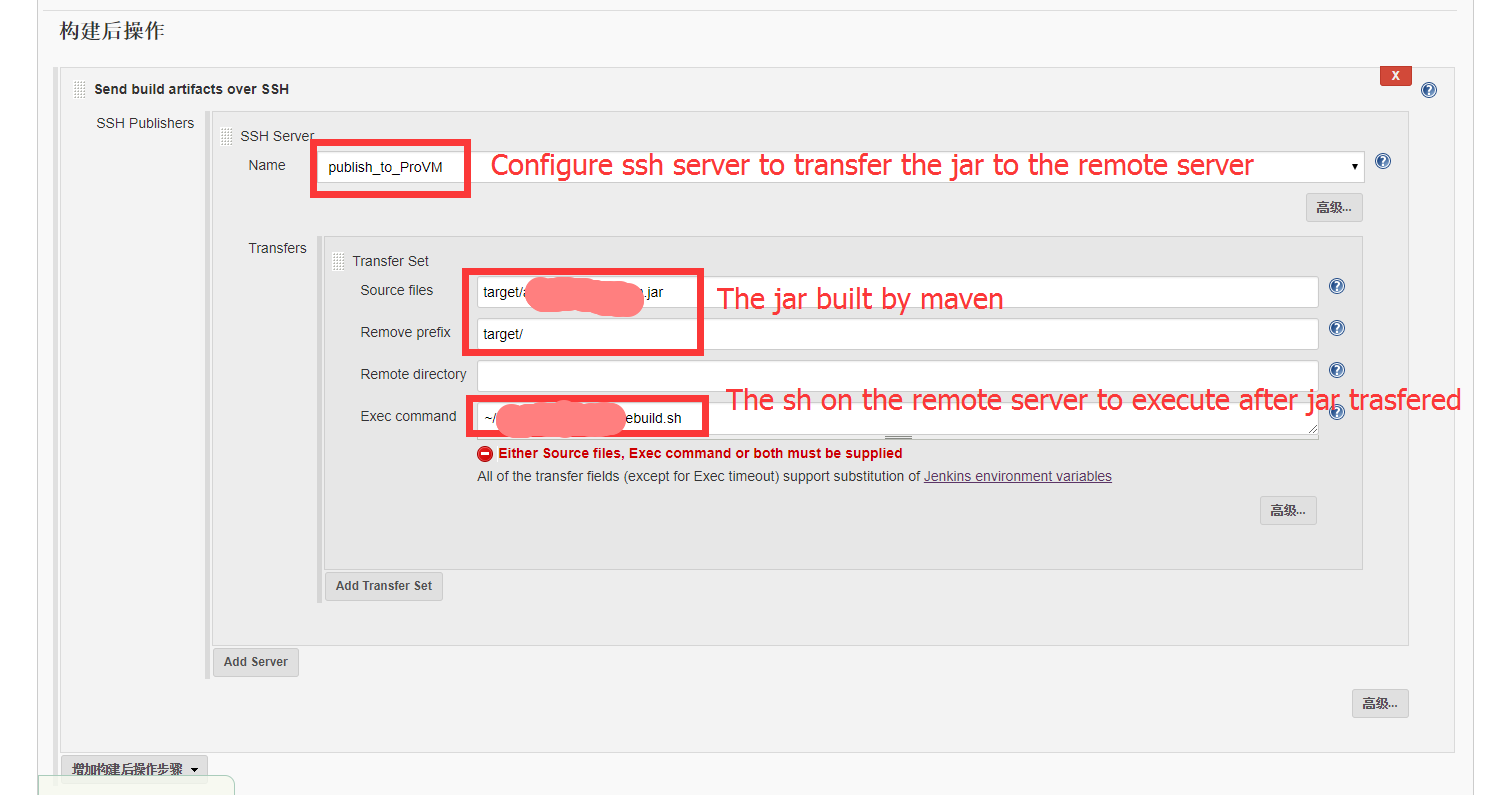
Create webhook in Github
Login the Bitbucket or Github and enter your SpringBoot project, enter the Webhooks page, add new a webhook with Jenkins server info and your job name and the above generated API token.
The webhook will be invoked when you push any code to the master branch. The related jenkins project will receive this webhook request and execute the build job immediately.

Try push code
If we try to push the code to Bitbucket now, we will find a webhook request error in Webhooks page.
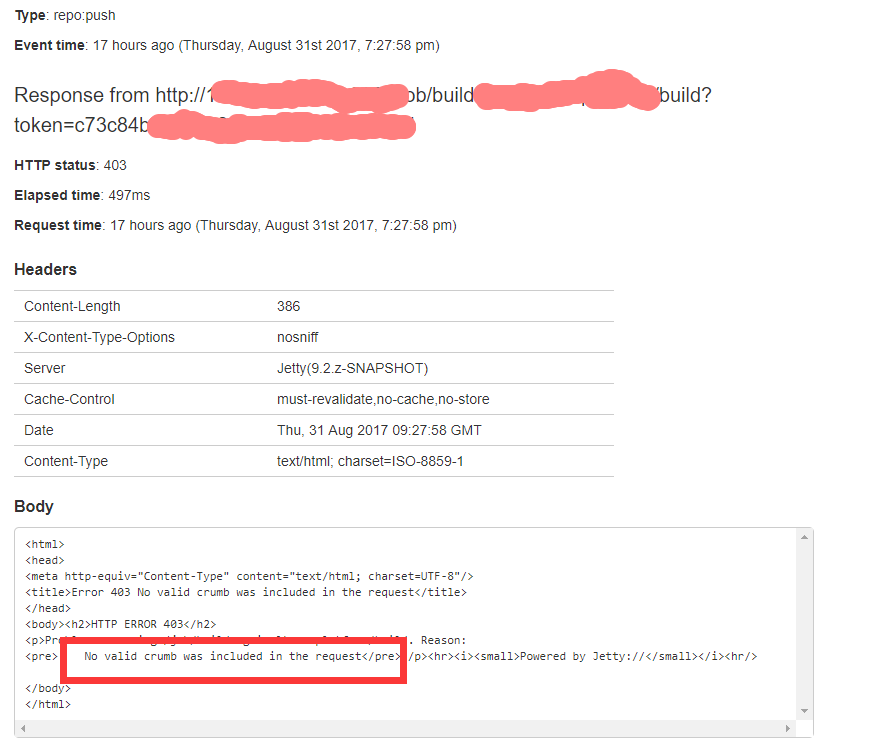
Configure global security
We should login the Jenkins and configure the Global Security and enable the webhook in order to fix the above issue.
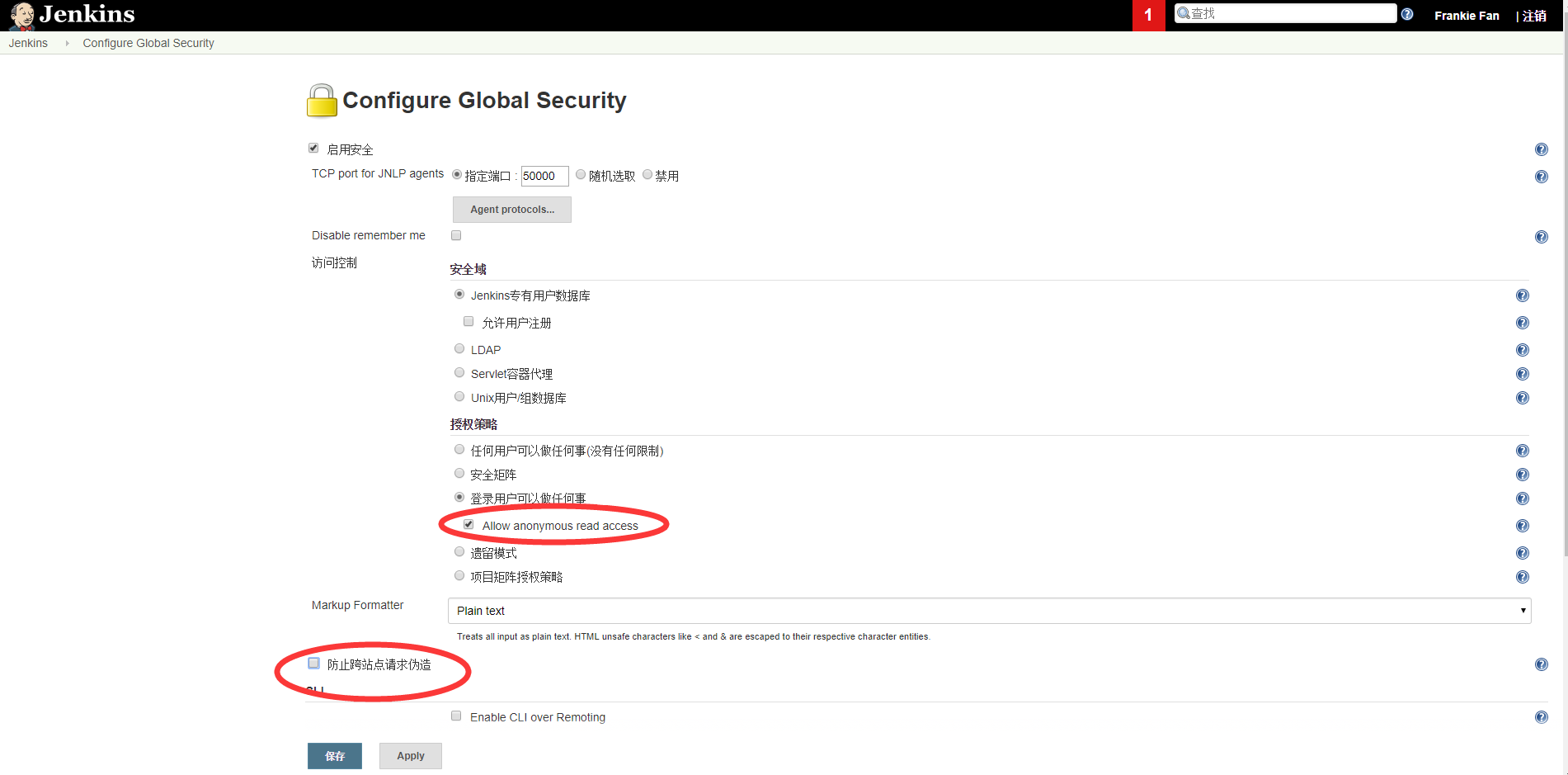
Deploy configuration
Shell scripts
Now Jenkins is configured to transfer the SpringBoot jar to "~/agriculture-platform" folder and run the shell script "~/agriculture-platform/rebuild.sh".
Login the remote server, we create "agriculture-platform" folder under ~, and create Dockerfile and rebuild.sh under it.

SpringBoot Dockerfile
The Dockerfile content is as bellow, it creates a docker image and copy the jar into it, then run the jar.
FROM hustakin/java8
MAINTAINER Frankie Fan "hustakin@gmail.com"
VOLUME /tmp
ADD agriculture-platform.jar agriculture-platform.jar
ENTRYPOINT ["java","-Djava.security.egd=file:/dev/./urandom","-Dspring.profiles.active=docker","-jar","/agriculture-platform.jar"]
EXPOSE 8001 8002
Build scripts
The rebuild.sh content is as bellow, it creates a docker image and copy the jar into it, then run the jar.
#!/bin/bash
cd ~/docker/agriculture-platform/
sudo docker stop agriculture
sudo docker rm agriculture
sudo docker build --no-cache -t="hustakin/test" .
sudo docker run -p 80:80 -p 443:443 -v /data/log/dev:/logs --name agriculture --restart=always -d hustakin/test --param=hello
Push code
After all the above configurations, now we completely finish the CI process. When we push the code to Bitbucket or Github, the Jenkins will start to maven build the code and transfer the jar to the remote server, then the remote server will rebuild the SpringBoot docker image and recreate the docker container.
